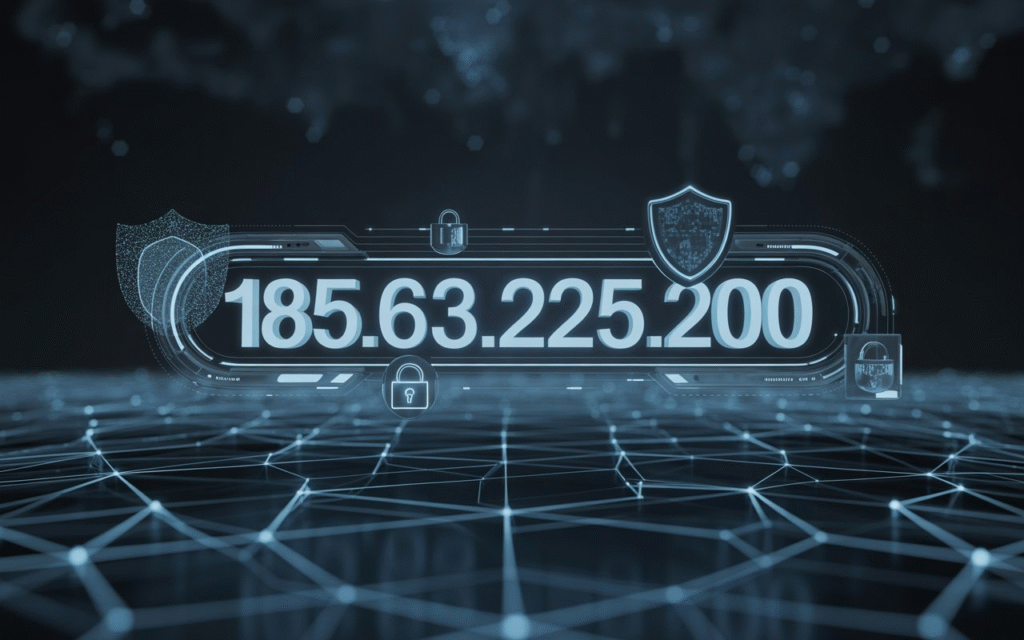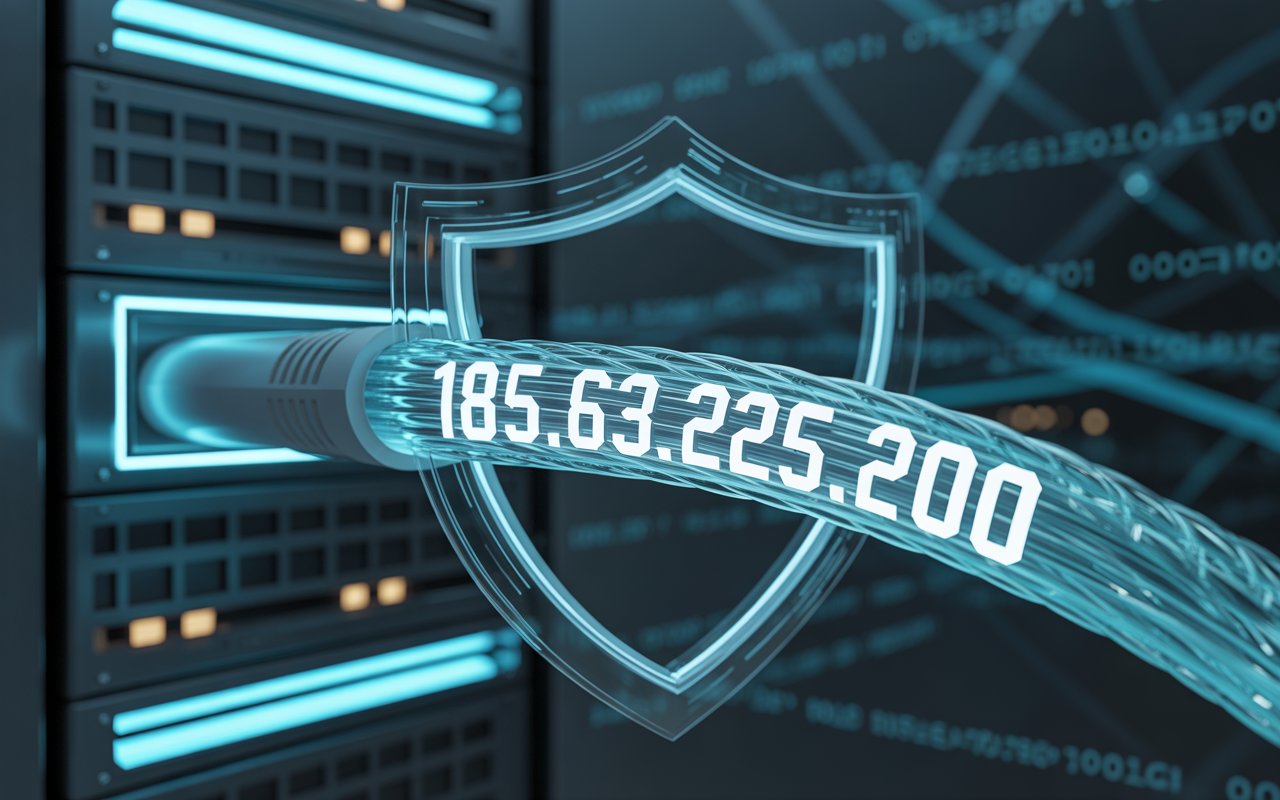Introduction
In the realm of internet communication and data exchange, every number has significance. One example that often sparks curiosity is 185.63.2253.200. At first sight, it looks like a typical IP address, but a closer look shows that it doesn’t conform to standard IPv4 or IPv6 rules. Despite its irregularity, professionals in networking and cybersecurity still encounter entries like 185.63.2253.200 in system logs, testing environments, or documentation. Understanding its context is vital because anomalies often reveal crucial lessons about data validation, error handling, and network security.
This article explores what 185.63.2253.200 means, why it matters, how it can appear in IT systems, and the practical insights it provides for businesses, developers, and security experts.
What Is an IP Address?
To appreciate why 185.63.2253.200 stands out, it’s important to understand the basics of IP addressing.
- IPv4: Uses four sets of numbers ranging from 0–255 (e.g., 192.168.1.1).
- IPv6: Uses longer alphanumeric structures to accommodate growing demand.
Since 185.63.2253.200 includes a block exceeding the maximum range, it falls outside valid IPv4 formatting. That immediately raises questions: Why does it exist in logs or training content? What purpose does it serve if it can’t function as a real address?
Why 185.63.2253.200 Is Considered Irregular
The uniqueness of 185.63.2253.200 lies in its format. The third octet exceeds 255, making it invalid in IPv4. This anomaly can occur for several reasons:
- Data Entry Errors – Misconfigured systems or human mistakes in input.
- Placeholder Value – Used as a stand-in during development or demonstrations.
- Malware or Decoys – Malicious scripts sometimes embed fake IPs like 185.63.2253.200 to confuse defenders.
- Educational Examples – Trainers may use such anomalies to explain valid vs. invalid IPs.
Networking Implications of 185.63.2253.200
In traditional networking, invalid addresses like 185.63.2253.200 cannot route traffic or establish connections. Still, their presence can cause disruptions:
- Failed Routing Tables: Systems trying to process invalid entries may waste resources.
- Connection Errors: Applications relying on 185.63.2253.200 will fail to reach a destination.
- Debugging Challenges: Logs filled with anomalies slow down diagnostics.
Yet, studying cases like 185.63.2253.200 helps network engineers strengthen systems against unexpected inputs.
Cybersecurity Relevance of 185.63.2253.200
From a security standpoint, 185.63.2253.200 holds value as a signal. Malformed or suspicious entries often reveal attempts at intrusion or testing system weaknesses.
Possible Security Contexts
- Attack Simulations – Ethical hackers may use 185.63.2253.200 during penetration tests to evaluate resilience.
- Log Analysis – Analysts investigate unusual IPs like 185.63.2253.200 to uncover hidden threats.
- Spoofing Attempts – Cybercriminals sometimes insert fake IPs to mislead investigators.
- Forensic Tracking – Post-breach analysis often flags anomalies, including invalid addresses.
Thus, while 185.63.2253.200 cannot host a real server, it remains a meaningful marker in the fight against cybercrime.
185.63.2253.200 in IT Training and Documentation
Many training manuals and IT tutorials use unrealistic addresses like 185.63.2253.200 to illustrate what not to do. This is intentional because:
- Learners quickly grasp the importance of format validation.
- Instructors can demonstrate error handling with real-world relevance.
- Developers understand why software must reject invalid inputs.
Such teaching techniques turn 185.63.2253.200 into an educational tool, helping students and professionals strengthen their networking skills.

Practical Lessons from 185.63.2253.200
Even though 185.63.2253.200 is invalid, it highlights valuable lessons:
- Validation First: Systems must confirm IP formats before processing.
- Never Ignore Anomalies: Logs with entries like 185.63.2253.200 may point to deeper issues.
- Security Awareness: Invalid inputs often expose weak points that attackers exploit.
- Documentation Clarity: Using examples responsibly prevents confusion in production systems.
Misconceptions About 185.63.2253.200
Several myths surround anomalies like 185.63.2253.200:
- “It must be a hidden server.” – False. It cannot exist as a functional endpoint.
- “It’s harmless.” – Not always. Its context in logs may signal attacks.
- “It’s just a typo.” – Sometimes, but not necessarily. Malicious actors may use it strategically.
Why Businesses Should Pay Attention to Entries Like 185.63.2253.200
For organizations, ignoring unusual data can be costly. If 185.63.2253.200 appears in system reports, it could mean:
- Security Gaps: Attackers testing weak defenses.
- System Misconfiguration: Poor coding practices or input validation errors.
- Operational Inefficiency: Extra time wasted debugging invalid entries.
Proactive monitoring ensures anomalies like 185.63.2253.200 do not escalate into major vulnerabilities.
Future Outlook: Lessons from 185.63.2253.200 in an IPv6 World
With the global shift toward IPv6, anomalies will still occur. The presence of 185.63.2253.200 demonstrates why future systems must:
- Integrate strict validation rules.
- Use machine learning to detect irregularities in real time.
- Train staff to identify and respond to unusual entries effectively.
Thus, the legacy of 185.63.2253.200 lies not in its technical validity but in the lessons it imparts.
Conclusion
At first glance, 185.63.2253.200 may look like just another IP address. But upon closer inspection, it reveals itself as a valuable teaching example, a potential red flag in cybersecurity, and a reminder of why validation matters in networking. While it cannot function as a real endpoint, its presence in logs, training material, or malicious scripts emphasizes the importance of vigilance, precision, and proactive monitoring.
In the digital era, details matter—and anomalies like 185.63.2253.200 serve as powerful reminders of how small irregularities can influence larger systems.


